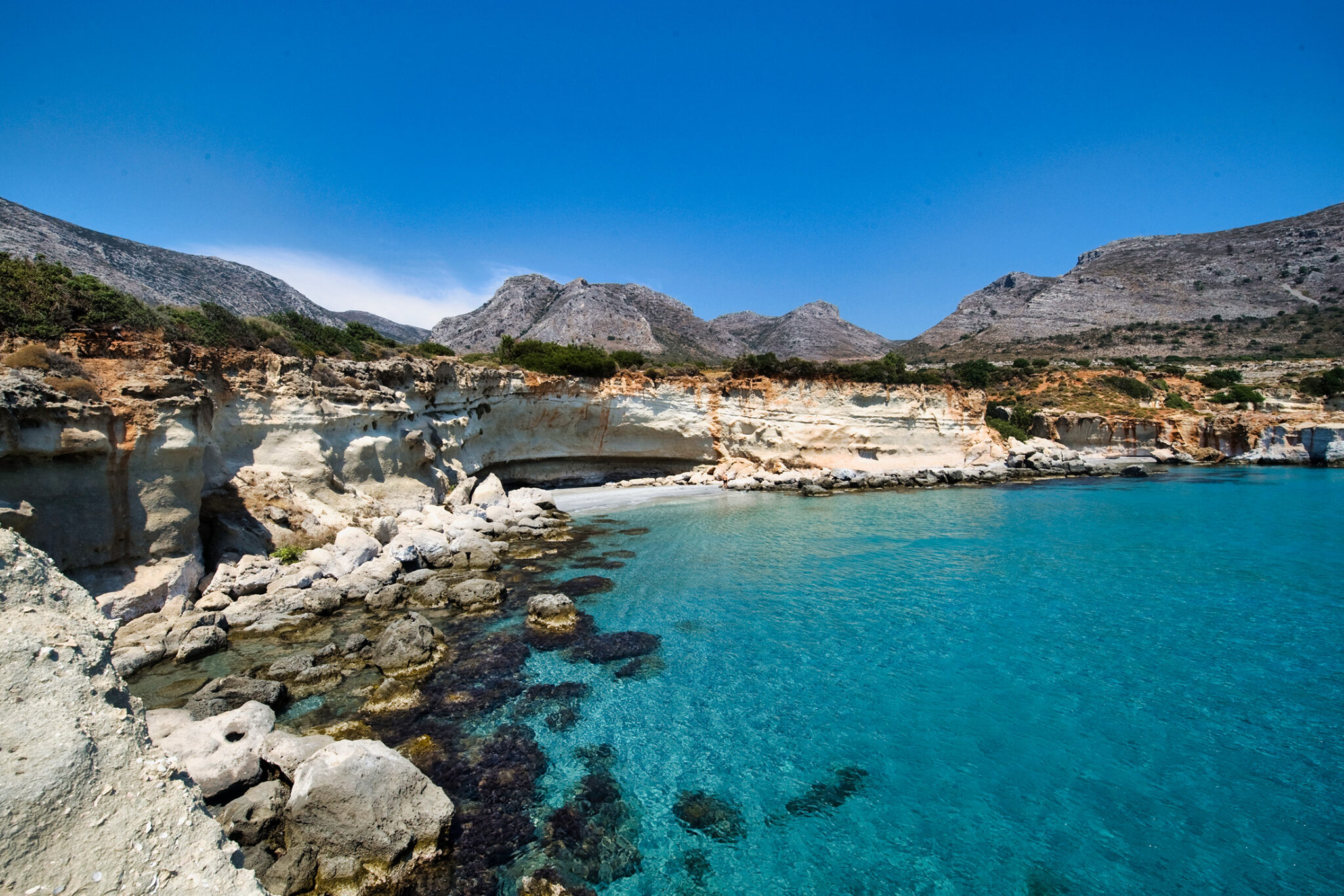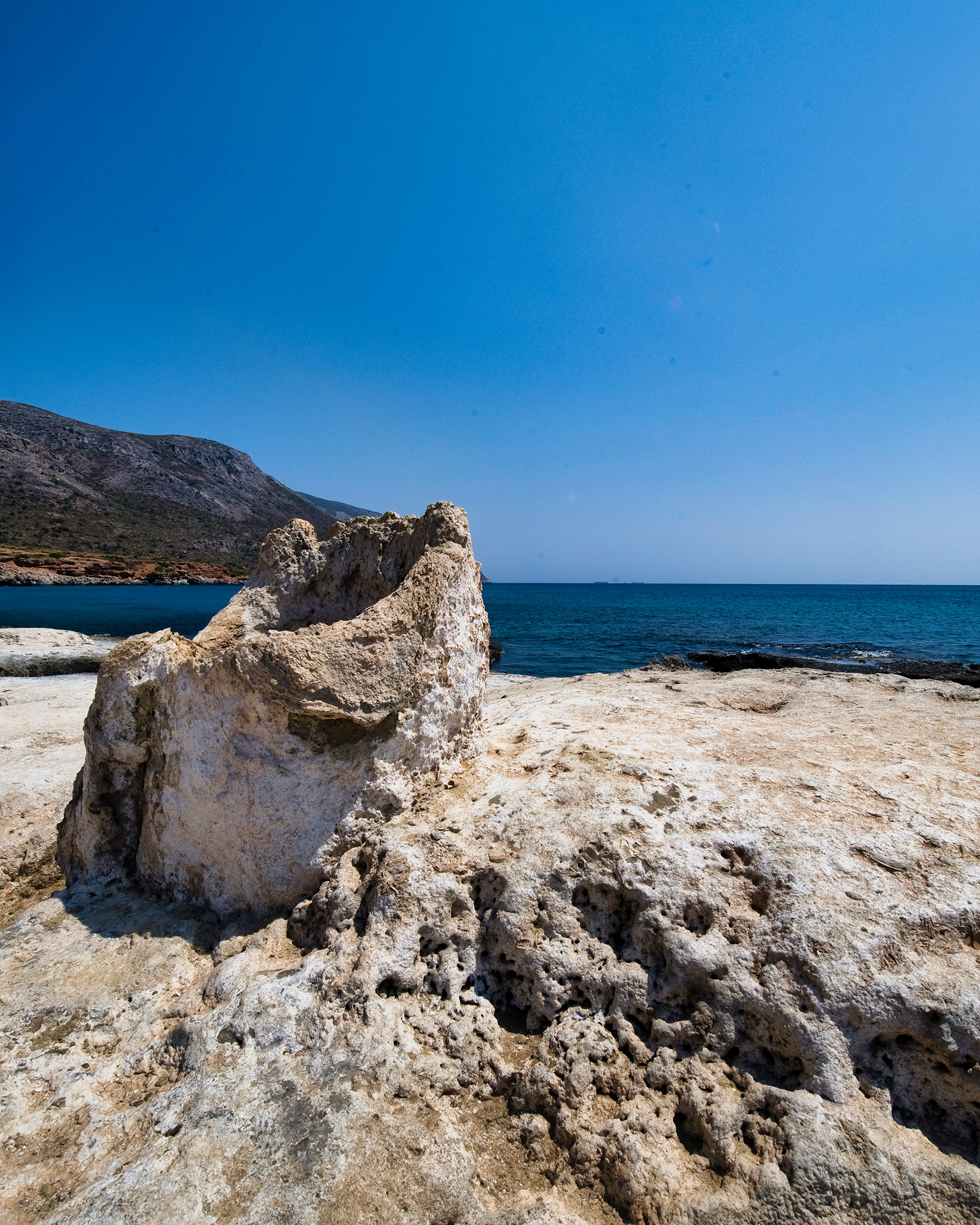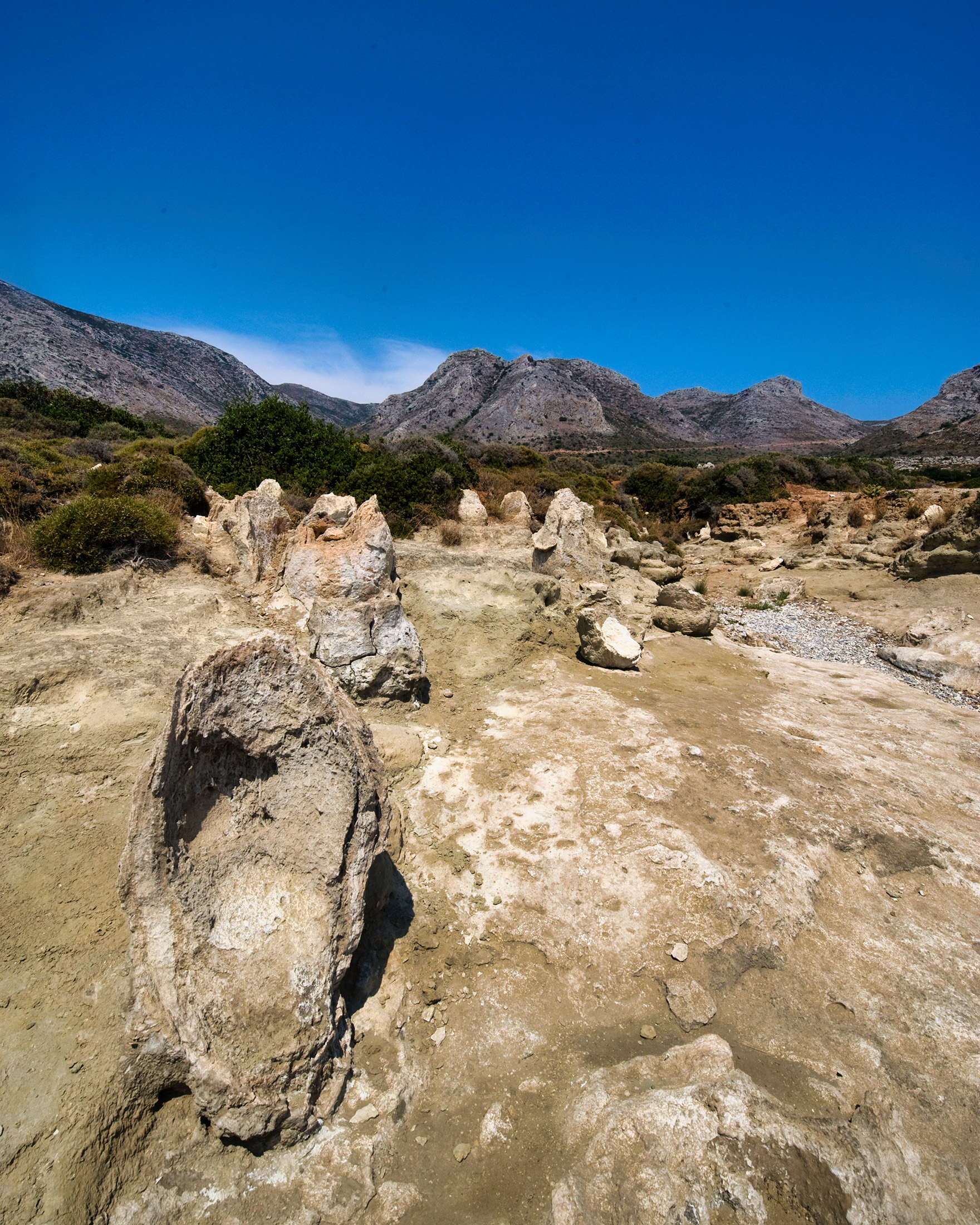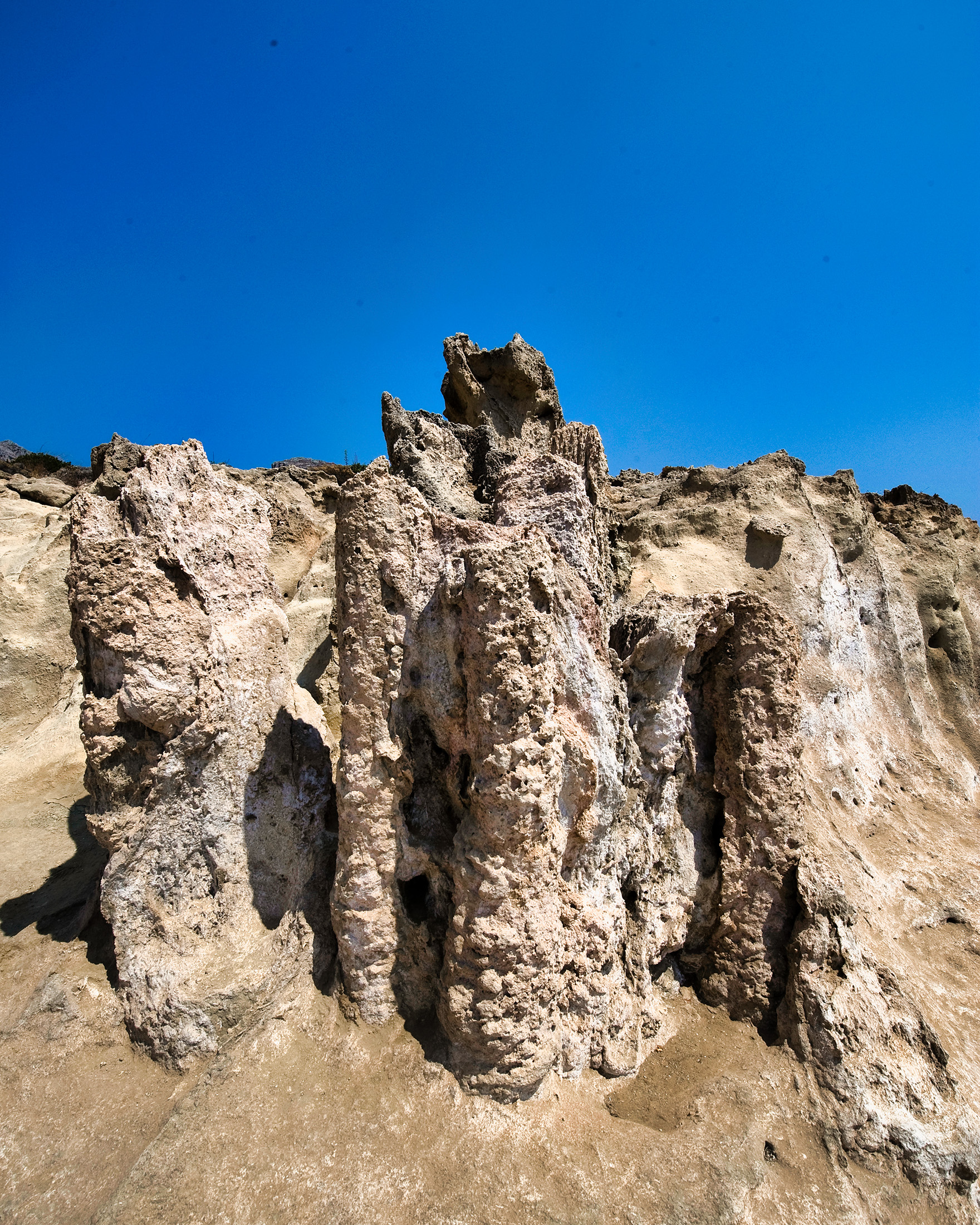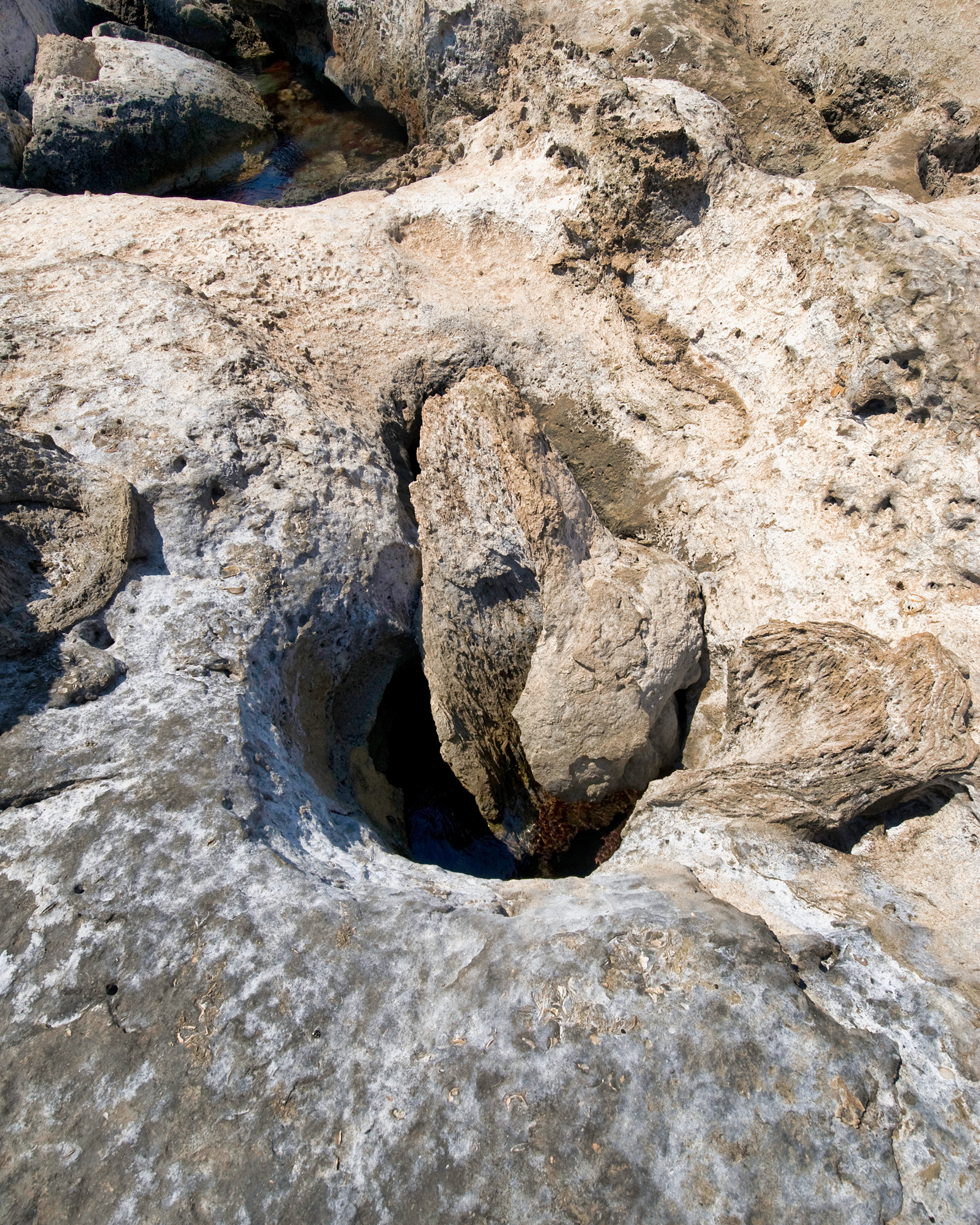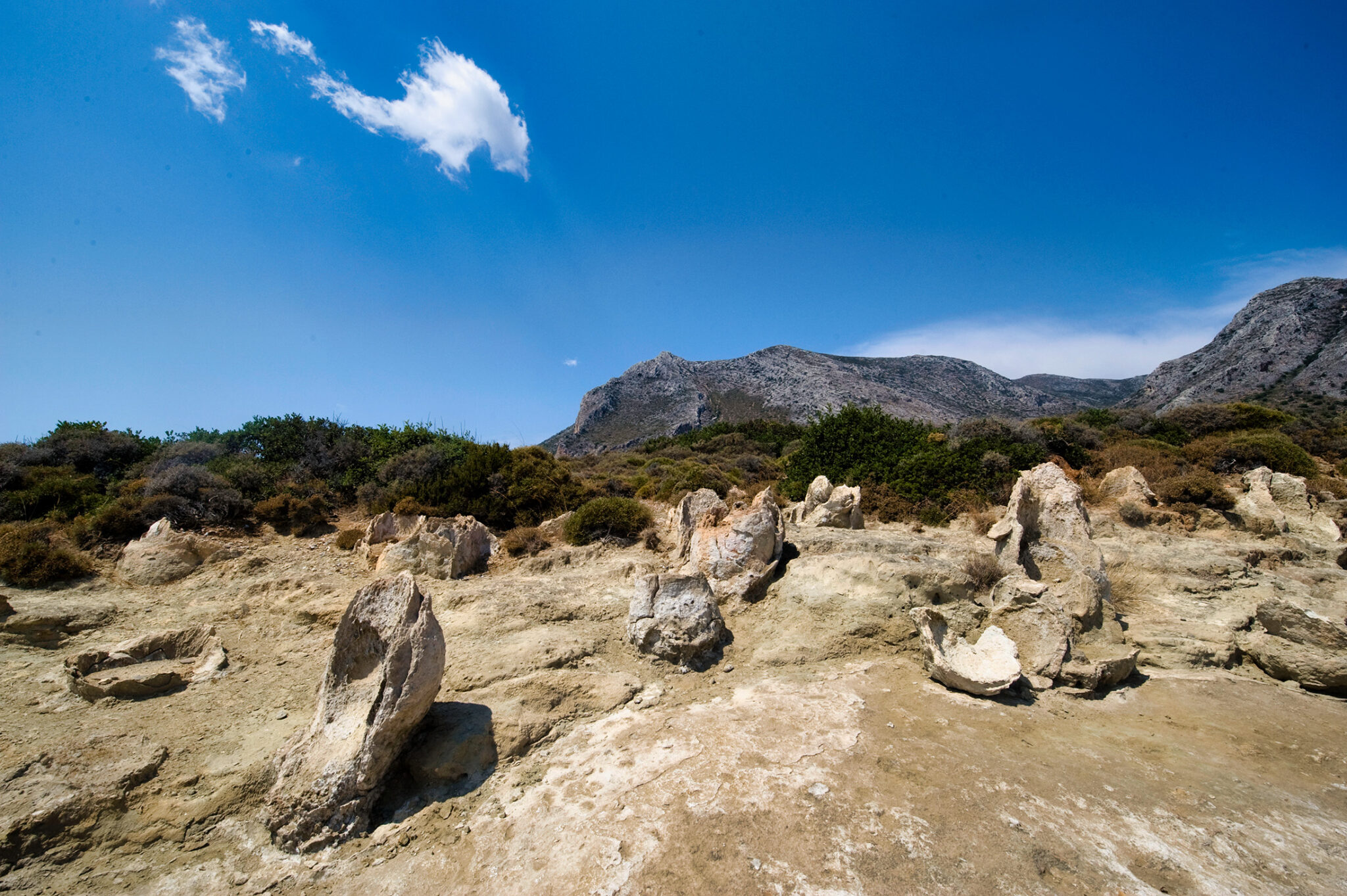Upon hearing the words “petrified forest”, one’s mind may automatically go to the famous natural monument in Lesvos, which, along with the Petrified Forest National Park in Arizona in the US, is considered the largest of its kind in the world.
Greece, however, is also home to a coastal petrified palm forest in Vatika, Laconia. Although it is lesser known than the one in Sigri, Lesvos, it is considered a true wonder of nature by anyone who has had the chance to explore the extensive coastal area where it is located – or anyone who has ventured to dive underwater to see its off-shore continuation.
A visit to the Agios Nikolaos geopark, where the forest is located, is captivating. The landscape is intoxicatingly beautiful with the wild nature embraced by the sea. Even coming here during the cooler winter months, Vatika’s beauty is engaging, the sight of waves crashing around the forest on cold, wintry days makes for a memorable sight.
A Landscape of Priceless Scientific Value
The petrified landscape of Vatika is hard to get your head around, especially if you envision what it once looked like – a forest made up mainly of palm trees, with some coniferous or broad-leaved trees that stood here a whopping two to three million years ago. Today, you’ll see fossilized trunks and hundreds of petrified root nodes, with diameters of up to one metre. You’ll also spot numerous fossilised molluscs characteristic of the life that existed then, that look strikingly different to the crabs, starfish and shells of today. Over the centuries, their organic matter has been replaced – molecule by molecule – by solutions of silica and calcium.
Some of the trunks, meanwhile, have impressive dimensions, ranging from 0.5 to 1 metre in diametre and up to 2 metres in height. The locals call the tallest among them “The Man” (“O Anthropos”), as its height is similar to that of a very tall human.
The scientific value of the findings here is considered invaluable because the fossilization process of this particular paleo flora and paleo fauna is completely unique by European standards. That’s the reason why it has already been included in the Atlas of Geological Monuments of the Aegean, while there is also an application for it to be included in the European Geoparks Network.
At this special place, fossilization did not occur due to direct contact of the prehistoric forest with volcanic ash, as was the case in most similar natural monuments. Instead, it resulted from a series of earthquakes and geological upheavals, which submerged the trees in the sea where they ‘calcified’, underwater, in a process that gradually transpired over a long period of time.
How to Get to the Petrified Palm Forest
To visit the petrified palm forest, start from the village of Agios Nikolaos Voion in Kavomalia, Lakonia (155 km from Sparta and about 35 km from Monemvasia), which is one of the largest, but also one of the most interesting villages in Vatika. Built on the south side of Mount Krithina, at an vatage point from where you can catch views of the islands of Kythera and Antikythera. From there, the forest is 7.4 km away.
From Agios Nikolaos, head towards the picturesque harbour of Profitis Ilias. Just before you arrive look for a sign for Agia Marina and follow the road from there. Just 3.3km later you’ll find yourself at your destination. Before you reach the chapel of Agia Marina, you’ll come across a sign with information on the entire geopark of Agios Nikolaos, including, of course, the Petrified Forest. The latter occupies the coastal sites of Agia Marina, Korakas and Spitha. The “Anthropos” trunk is located in Spitha but, as mentioned earlier, also extends underwater, so for the overall experience, it’s a good idea to (also) plan a dive here (bring your masks and snorkels), weather permitting of course.
Read also:
Stavros: Cretan double beach with turquoise waters, old Venetian quarry
Τhe beach in Argolida where you’ll swim over a sunken city



